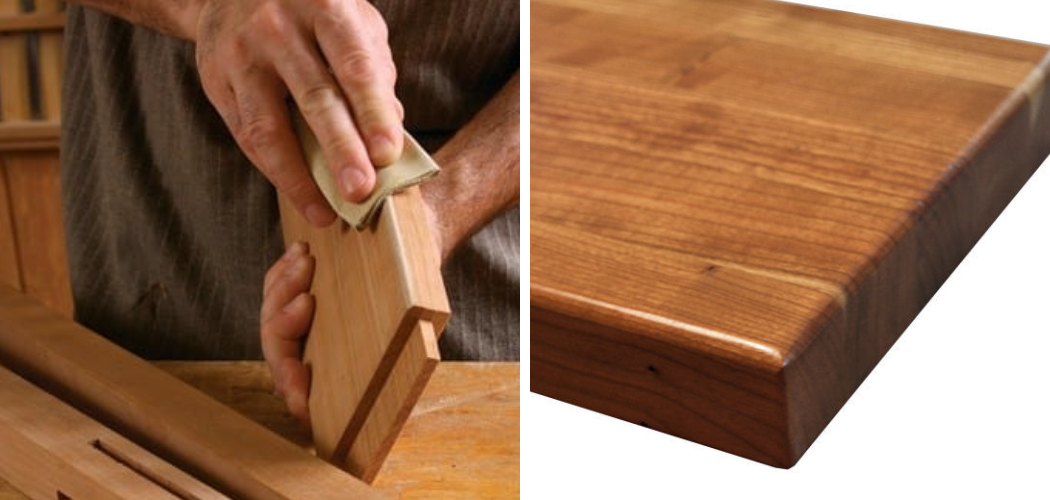Rounding over wood edges is a great way to give it a professional and polished look. Unfortunately, routers can be expensive and difficult to use, especially for beginners. So, what’s the solution? In this blog post, we’ll show you how to round wood edges without a router using some tips that anyone can do. Let’s get started!
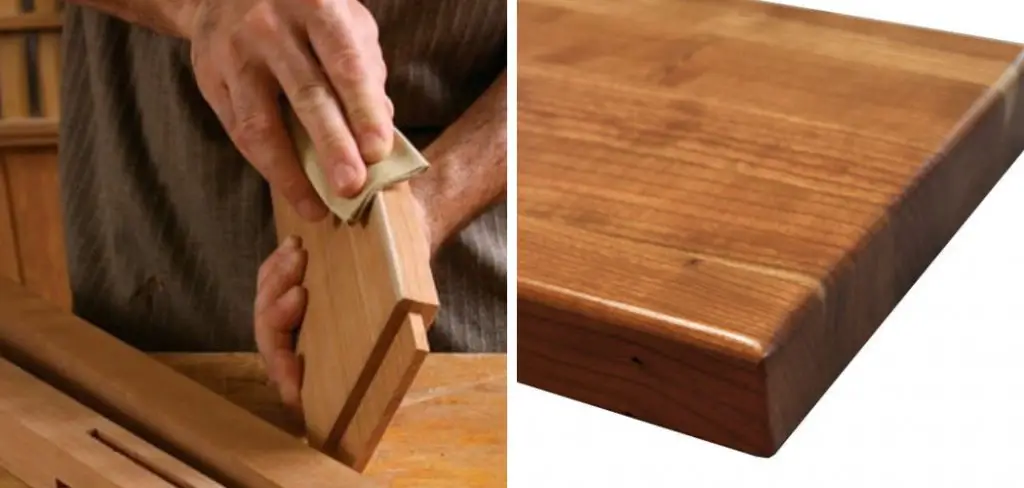
Summary: There are a couple of ways to round wood edges without a router. The first is to use a hand-held belt sander. Start by sanding the edge of the wood until it is smooth. Then, use a jigsaw to cut a rabbet around the edge of the wood. Finally, use a palm sander to finish off the edge.
Why Should You Round Wood Edges without A Router?
Routing wood is a process of using a router to create a smooth, even edge on a piece of wood. This can be an important part of the woodworking process, as it can help to create a professional-looking finish. However, there are some situations where it might be better to round wood edges without a router. For example, hand-sanding may be sufficient if the wood is already smooth or if you’re working with a small piece of wood.
Rounding edges without a router can also be quicker and easier, making it a good choice for novice woodworkers. In addition, routing can sometimes cause chips or splinters in the wood, which can be avoided by selecting another method. Ultimately, the best way to round wood edges will depend on the project at hand and the preferences of the woodworker.
7 Ways to Follow on How to Round Wood Edges Without A Router
1. Use a Chisel
One of the simplest and quickest ways to round over wood edges without a router is to use a chisel. This method is ideal for small pieces of wood or for rounding over relatively thin edges. You’ll need a sharp chisel and a mallet (or hammer) to start.
First, place the wood on your work surface with the edge that you want to round over facing up. Then, position the chisel at a 45-degree angle to the edge of the wood and strike it with the mallet to create a groove. Be sure to keep the chisel as level as possible as you work your way around the edge of the wood.
2. Use a Plane
If you have a hand plane, you can also use it to round over edges without a router. This method is a bit more time-consuming than using a chisel, but it can still be done relatively quickly if you’re working with a small piece of wood.
To get started, set the plane’s blade to a 45-degree angle. Next, adjust the depth of the cut so that the blade is only protruding about 1/8 inch from the body of the plane. Then, with the plane properly adjusted, hold it against the edge of the wood and start pushing it forward.
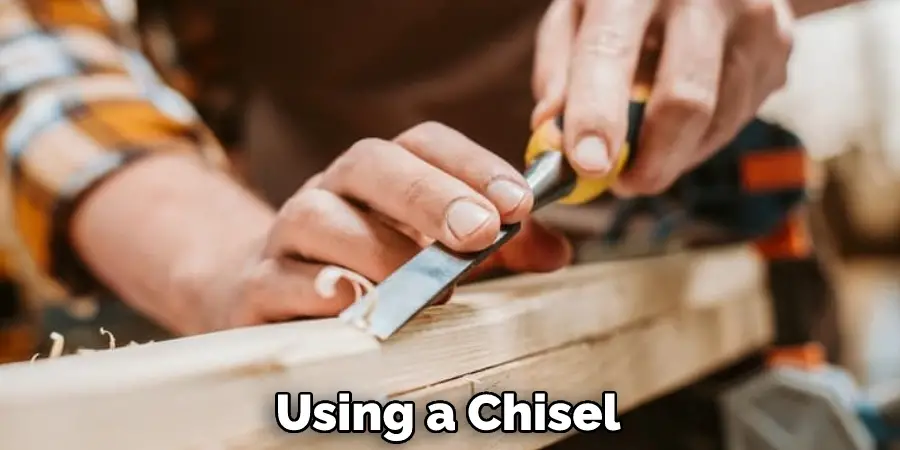
3. Use a Sanding Block
If you don’t have a chisel or plane, using a sanding block can still round over the edges without a router. This method will take a bit longer than the other two, but it’s still relatively simple and requires no special tools.
To get started, you’ll need a piece of sandpaper and a sanding block. If you don’t have a sanding block, you can use a piece of scrap wood or even an old credit card. Once you have your materials, start by placing the sandpaper on the edge of the wood that you want to round. Then, holding the sandpaper in place, use the sanding block to sand along the wood’s edge.
4. Use a Belt Sander
If you have a belt sander, you can use it to round over the edges of your wood without a router. This method is similar to using a sanding block but will be much quicker since the belt sander will do most of the work for you.
To get started, you’ll need a belt sander and a piece of sandpaper. Start by attaching the sandpaper to the belt sander. Then, adjust the depth of the sander so that the belt only protrudes about 1/8 inch from the body of the tool. With the sander properly adjusted, hold it against the edge of the wood and start moving it forward.
5. Use a Drum Sander
If you have a drum sander, you can use it to round over the edges of your wood without a router. This method is similar to using a belt sander but will be even quicker since the drum sander will do most of the work for you.
To get started, you’ll need to set up your drum sander so that the Sanding Drum is at the correct height. Next, you’ll want to attach a piece of 80-grit sandpaper to the drum. Once the sandpaper is in place, you can start running the wood through the sander.
6. Use a File
If you don’t have any power tools, you can still round over the edges of your wood without a router by using a file. This method is similar to a sanding block but will be much slower since you’ll have to do all the work yourself.
To get started, you’ll need a file and a piece of sandpaper. Start by placing the sandpaper on the edge of the wood that you want to round. Then, holding the sandpaper in place, use the file to file along the wood’s edge.
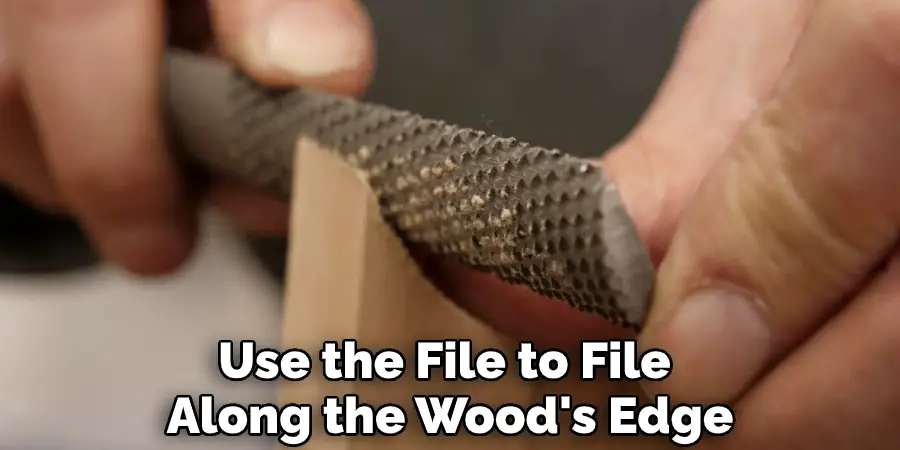
7. Use a Dremel Tool
If you have a Dremel tool, you can use it to round over the edges of your wood without a router. This method is similar to using a sanding block but will be much quicker since the Dremel tool will do most of the work for you.
To get started, you’ll need a Dremel tool and a piece of sandpaper. Start by attaching the sandpaper to the Dremel tool. Then, adjust the tool’s speed to run at a medium speed. Finally, with the Dremel tool properly adjusted, hold it against the edge of the wood and start moving it forward.
That’s it! You’ve now learned how to round wood edges without a router. These seven methods will all give you the same results, so choose the one that’s best for you based on the tools that you have available.
Can You Round Wood Edges without A Router?
Routers are one of the most versatile tools in a woodworker’s arsenal. They can create everything from intricate patterns to smooth, clean edges with the right bit. However, routers can be expensive and require a certain level of skill to use properly. So, what if you want to round wood edges without a router?
Fortunately, there are a few different ways to do this. One option is to use a spindle sander. This tool will enable you to sand down the edges of your wood piece to create a smooth, rounded edge. Another option is to use a belt sander. Belt sanders are typically faster and more aggressive than spindle sanders, so they can be great for quickly rounding off edges.
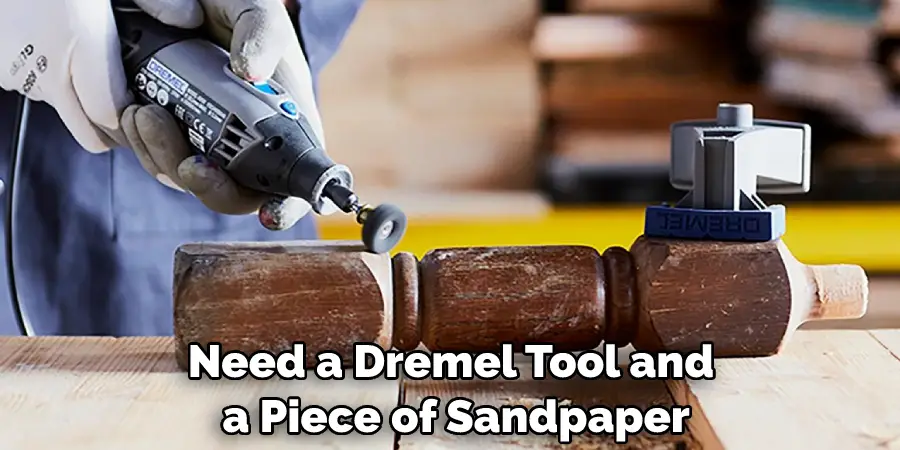
Finally, you can also use a handheld power planer. Power planers are designed for removing large amounts of material quickly, so they can also be used to create smooth, rounded edges on wood pieces.
So, there you have it! You can absolutely round wood edges without a router. All you need is the right tool for the job. So, now get out there and start creating! Keep reading for more information about how to round wood edges without a router.
Why Rounding Your Wood Edges Is Important
Any woodworker will tell you that one of the most important steps in any project is properly rounding the edges of your wood. There are a few reasons for this. First, rounded edges are simply more aesthetically pleasing than sharp, angular ones. Second, rounded edges are less likely to splinter or break off, which can ruin your project.
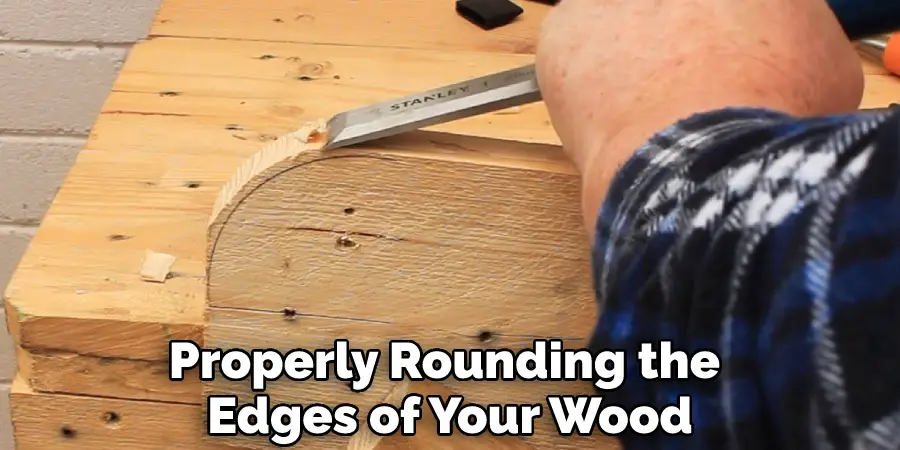
Finally, and most importantly, rounded edges are much safer than sharp ones. Whether you’re working with power tools or hand saws, it’s always best to err on the side of caution and round off any sharp edges. Ultimately, taking the time to round your edges will result in a better-looking and safer final product.
How to Use a Hand Router to Round Your Wood Edges
A hand router is a versatile tool that can be used for various woodworking tasks, including rounding edges. Rounding edges is a common woodworking technique that helps create smooth, finished edges on various projects. To round your wood edges with a hand router, start by attaching a round-over bit to the router. Next, adjust the bit’s depth so that it cuts to the desired depth. Then, position the router along the wood’s edge and slowly guide it around it.
As you move the router around the edge, be sure to apply even pressure and keep the router moving at a consistent speed. Once you’ve gone all the way around the edge, remove the router and inspect your work. If you’re happy with the results, sand away rough edges and finish as desired. By following these steps, you can easily use a hand router to round your wood edges.
Why Would Someone Want to Round Wood Edges without A Router?
Woodworking is a fun and rewarding hobby but requires a lot of precision and attention to detail. One way to achieve precise results is to use a router, which can quickly and easily create smooth, curved edges on pieces of wood. However, routers can be expensive and require some experience and skill to use properly. For those reasons, some woodworkers prefer to round the edges of their pieces by hand.
While it takes longer to achieve the desired results, hand-sanding offers several advantages. First, it requires no special equipment, so it’s much more affordable than using a router. In addition, it gives the woodworker more control over the shape of the edge, and it’s easy to learn how to do it. As a result, rounding wood edges by hand is a popular choice among many woodworkers.
How to Round Wood Edges with A Band Saw
A band saw is a powerful tool that can be used to make quick work of cutting through wood. However, it can also be used to create smooth, rounded edges on a piece of wood. The first step is to mark the line where you want the cut to be made. Then, set the band saw blade to the desired width and cut. It’s important to keep the blade perpendicular to the surface of the wood as you cut; otherwise, you’ll end up with an uneven edge.

Once you’ve reached the end of the line, slowly guide the wood off of the blade and sand down any rough edges. With a little practice, you’ll be able to create perfect round edges on all of your woodworking projects.
How to Soften Wood Edges?
Softening wood edges is a common DIY woodworking technique that can give your projects a smoother and more professional finish. Depending on the tools and materials available, there are a few ways to soften wood edges. One classic way is to use sandpaper to smooth the corners and edges of the wood gently. Start with a coarse grit sandpaper and gradually progress to finer grits until the edge is smooth to the touch.
Another popular option is to use a handheld router with a round-over bit. This tool can quickly and easily take the sharp edge off the wood, making it more comfortable to touch. Finally, some woodworkers use a technique called break routing, which involves breaking the sharp edge of the wood with a chisel.
Regardless of the method chosen, it’s important to take care when handling the wood and always to wear protective eyewear and clothing. Softening wood edges is an easy and simple technique that can give your woodworking projects a finished and refined look.
Conclusion
With a few simple tools and techniques, you can round the edges of your woodworking projects without a router. You’ll have beautifully rounded edges by following these steps in no time! Thanks for reading our post about how to round wood edges without a router. Have you tried rounding wood edges before? What methods do you use?

